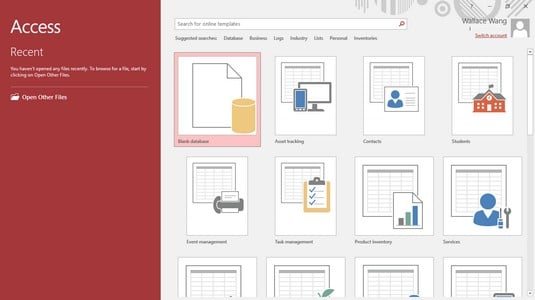


There is a wide range of simple and enterprise applications available on the access database. Microsoft access is a convenient way to enter the data and does not take much time. That’s not the case with Access.Microsoft Access is a simple way to create a database to store and manage data. What’s more, storing data in list form requires you to use special Excel tools, such as pivot tables, so that you can analyze and view the data in a meaningful way. Although you could store even complex data in list form in Excel, doing so typically results in a lot of data duplication and the risk of data-entry errors.

And because the spreadsheet would be cumbersome to work with, there’s a chance that over time you or a colleague would enter some employee data incorrectly. That means you would be repetitively entering the employee data, and you would end up with a lot of duplicate data stored in the Excel file. In this case, you would need to repeat each employee’s name and employee number for each device in their possession. It also wouldn’t be easy to view the data if someone had a lot of equipment, as you would have to set up more columns than would fit comfortably in the Excel window.The other way to arrange the data in Excel is to allocate one row in the worksheet to each electronic device, but this setup is just as cumbersome, albeit for different reasons.
Microsoft Access Database Design Plus The ID
Click on Click to Add, and enter details for the first two fictional employees: Type James, press Enter to move to the next column, and type Smith. Since you’ll be building this database from scratch, choose Blank database.Access offers templates to quick-start a project if you prefer, however, you can choose ‘Blank database’ to create one from scratch.Table1 will appear on the screen. This is what’s known as a relational database, and Access makes such a database very easy to create.First, launch Access and choose File, New. The only duplicate data in this arrangement is the employee ID number, which serves to link the two lists. In a second table (another list), you’d enter the description and ID number for each device, plus the ID number for whichever employee is in possession of that item. In Access, you would create one table (a list) of employees, with each record containing the employee’s name and ID number.
This line describes a one-to-many link: One employee can have many devices, but each device can be allocated to only one employee.Now that the two tables are linked, you can create a form that will make it easy to add employees and devices. You should now see a line between the two tables, with a 1 on the Employees side and the infinity symbol on the Electronics side. When the Save As dialog box appears, type Employees as the table name (in the tab beneath the menu bar) and click OK.The Relationships tool allows you to create the link between the two data tables. To make these changes, click the View drop-down menu on the Home tab of the Ribbon toolbar, and select Design View.
Finally, click Description, click the single arrow, and then click Next.The Form Wizard is used to create a form that lets you work with both tables at once.When you see the ‘How do you want to view your data?’ prompt, click by Employees, choose Form with subform(s), and then click Next. Next, in the Table/Queries menu, click the Table: Electronics entry, click IDcode, and click the single arrow. When the Form Wizard dialog box appears, select Table: Employee from the Tables/Queries menu, and click the double-arrow button to add all the fields to the Selected Fields list.
When you add a new electronics item, Access will associate it with the current employee automatically.Harness the Power of Relational DatabasesThis simple example gives you an indication of the power of relational databases in general, and Access in particular. You’ll find similar navigation and new-record buttons at the foot of the subform, which shows details of the electronic devices associated with each employee. Here too is a ‘New (Blank) Record’ button that you can click to add a new employee. You can move from one employee to the next using the navigation tools at the foot of the screen.
A professional database designer can build interactive query screens, assemble complex reports, and incorporate features that will protect the integrity of your valuable data. That said, some small businesses need databases that are so complex that they’ll have to ask a specialist to build them. You can easily navigate from one employee to the next, instantly see the electronic devices they’ve been assigned, and even add and delete data using the form.Of course, there’s a lot more to Access than what I’ve exposed here but as you become familiar with the basics, you’ll recognize many opportunities where databases can be a boon to your business.


 0 kommentar(er)
0 kommentar(er)
